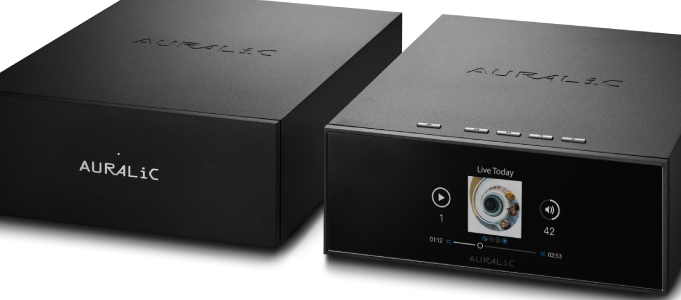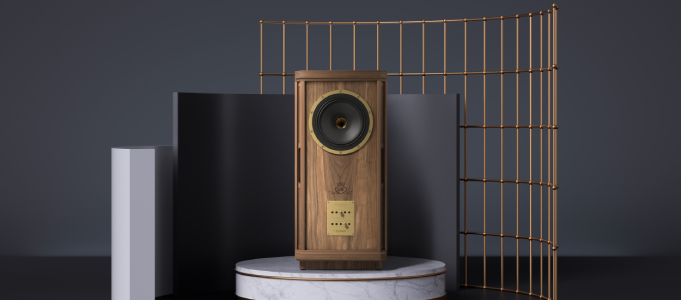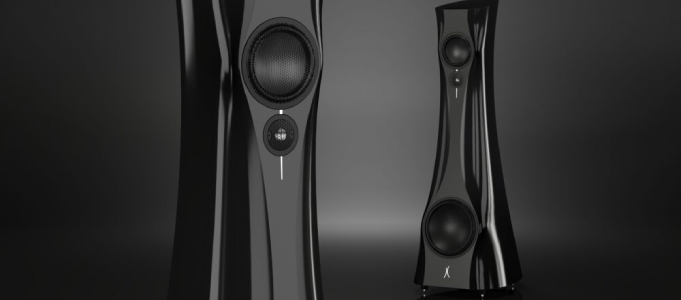Falcon Acoustics IMF100 Loudspeaker Kit Review

Neville Roberts is blown away by the power and poise of this compact standmounting transmission line design…
Falcon Acoustics
IMF100 Loudspeaker Kit
Walnut (AUD $2,799), Rosewood (AUD $3,099)
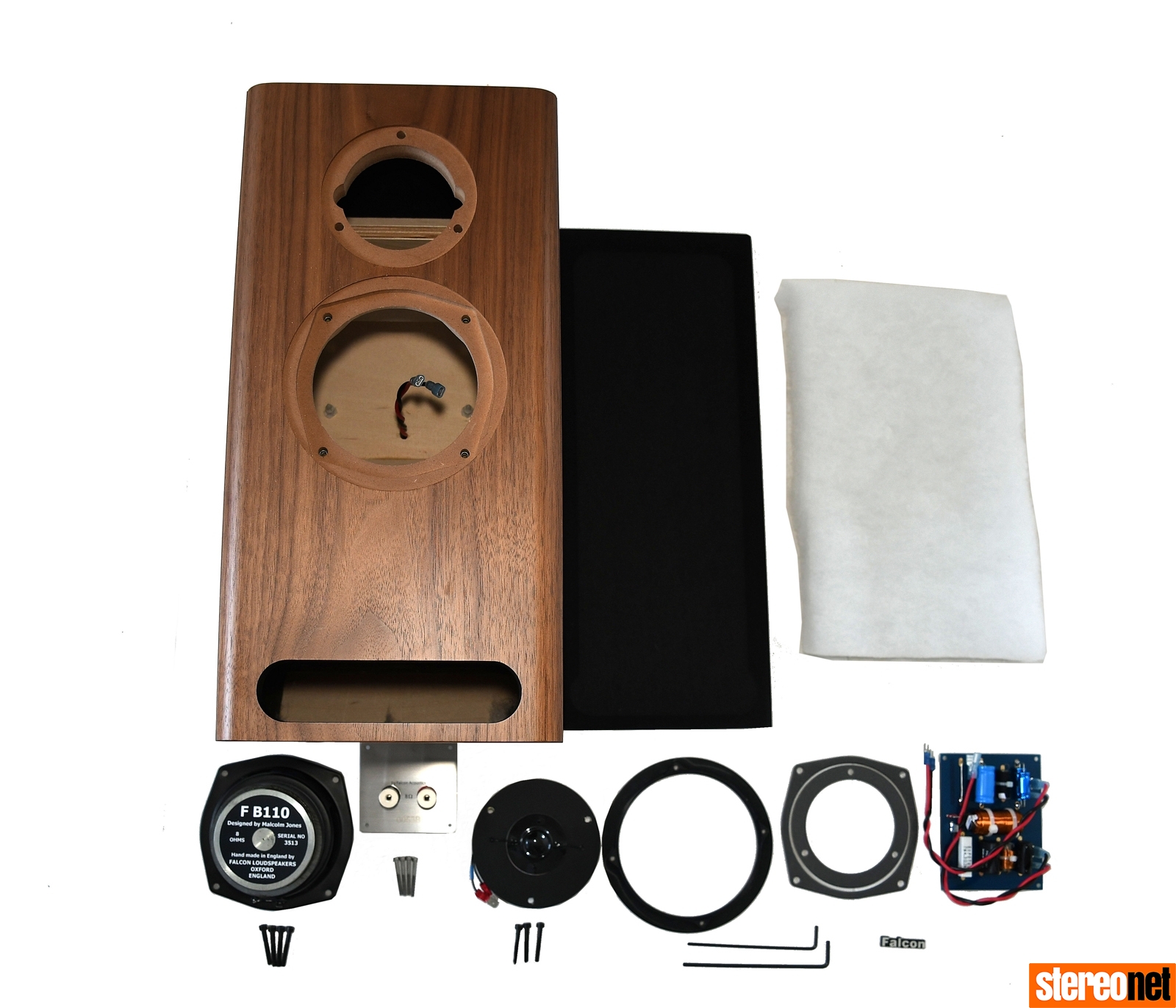
First, a little bit of history. Falcon Acoustics was founded in 1972 as Falcon Electronics by the first employee of KEF Electronics Limited, Malcolm Jones. As Senior Development Engineer there, Jones was responsible for most of the design and development work on many of that company's legendary drive units – including the B200, B110, T15, T27 and B139. In 1974, he left KEF to work full time at Falcon Acoustics, which was initially formed to supply the retail DIY market with a range of components and items needed for building speaker systems. Since then, Falcon has grown to be the largest UK supplier of drive units, a purveyor of OEM drivers and a manufacturer of some serious loudspeaker systems.
The IMF100 is part of a new range of what Falcon calls 'Plug and Play' kits. This includes transmission line, infinite baffle and bass reflex enclosure types, and they all employ Falcon drive units, of course. Crossovers and wiring are all factory preassembled to make it easy even for a relative novice to build a top-quality pair of speakers. This particular kit gives you an eighth-wave transmission line bookshelf loudspeaker, at a price that seems very reasonable for what you're ending up with.
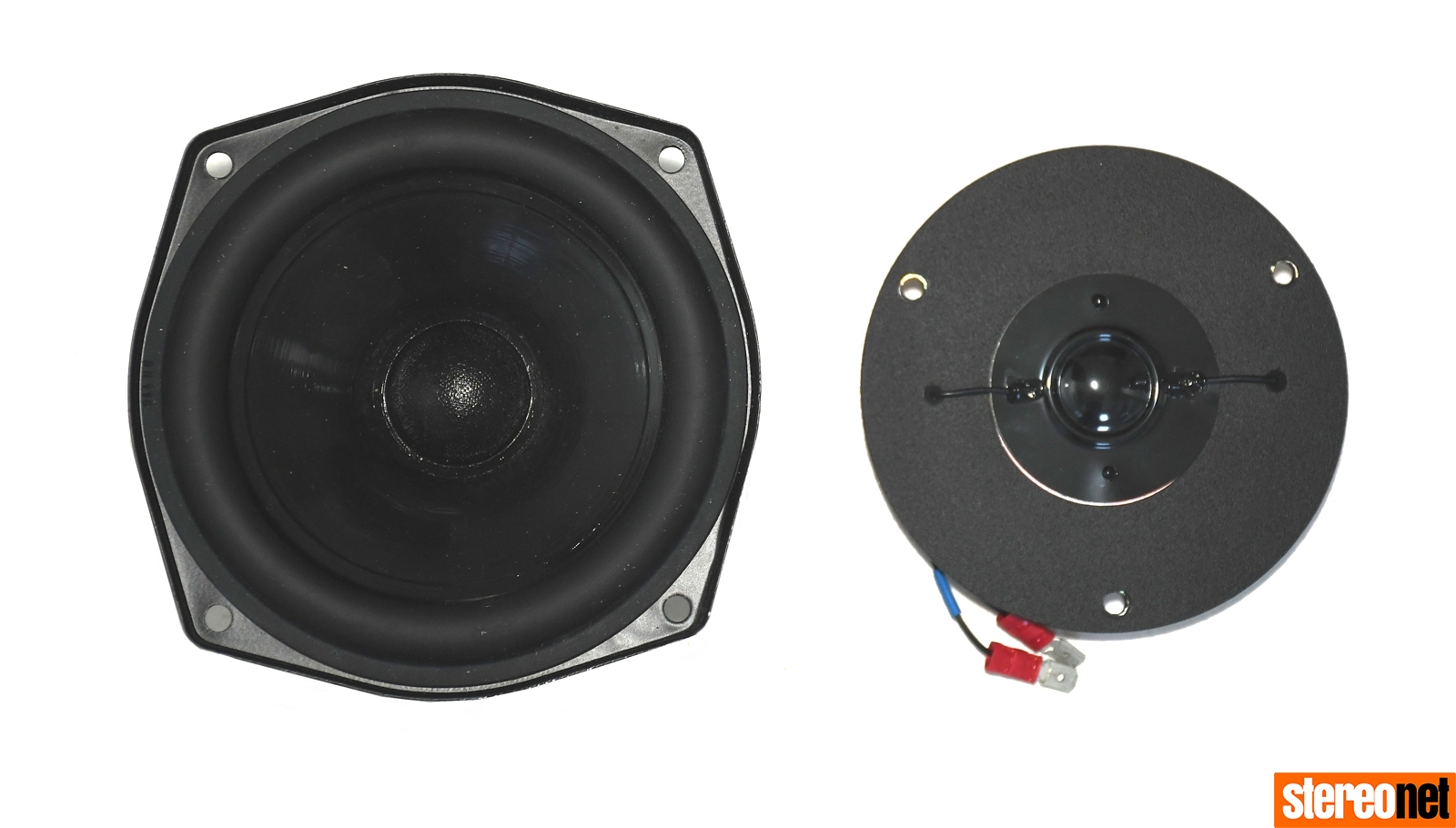
I am personally a huge fan of transmission line designs, and have been using a pair of quarter-wave TL floorstanders since the nineteen seventies – my wife had to marry them as well as me, in the eighties! I believe that no other enclosure design can control bass response in a domestic setting like a transmission line, although of course, it is not the simplest of cabinets to construct. However, the reward is an extended, tuneful and tight bass that can really pack a punch when it needs to, while never becoming woolly.
THEORY AND PRACTICE
Firstly, a word or two about how transmission line loudspeakers work. All enclosure designs aim to tame the natural resonance of the bass driver, to minimise the peak in the bass response at the driver's resonant frequency and its harmonics. It's also desirable to extend the bass below resonance, and all this has to be done without too great an efficiency loss. Also, the enclosure has to acoustically couple the drive units to the room, which is by no means an easy task as a room suitable for living in is not best suited for listening.
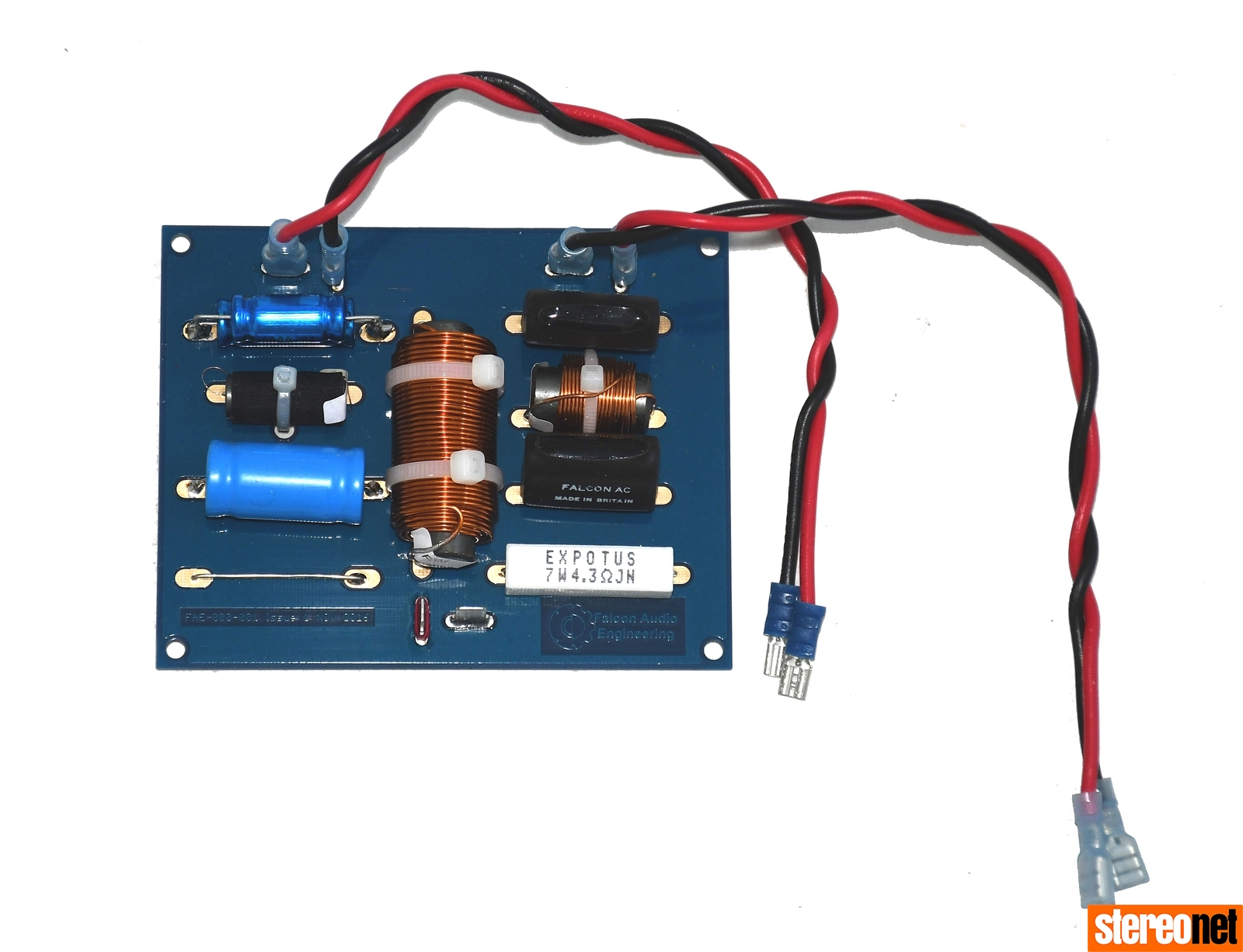
With a transmission line design, the rear of the cone of the bass driver sits at one end of a carefully designed acoustic line. If you consider a quarter-wave line, its length is chosen to be a quarter of the wavelength of the natural resonant frequency of the bass driver – with a few adjustments that will be discussed later. The line is simply a resonance tube, like any wind instrument.
However, unlike an organ pipe, it needs to work over a range of frequencies. At the bass driver's resonant frequency, the port will reflect the wave back to the driver, and this wave will be in anti-phase to the rear of the cone that produced it. This controls the resonance, as with a bass reflex enclosure. These anti-phase resonances also occur at every quarter wavelength, and this will have the effect of controlling the various harmonics, unlike a reflex enclosure. It's also why an eighth-wave line will work at constraining the peaks in the bass response.
One of the benefits of a transmission line is that at frequencies below resonance, the anti-phase sounds emanating from the rear of the cone (relative to the front of the cone) emerge from the exit port in-phase, and therefore reinforce the response and extend the range of the loudspeaker. Another benefit is that the inevitable eigentones (tones liable to cause resonance in a particular space) and other room resonances can be picked up by the port and fed back into the rear of the woofer cone, which helps to cancel them out. So with correct positioning, the loudspeakers can adjust to suit your listening environment.
However, it's not all good news. Odd-order harmonics will reach the end of the line out of phase, and tend to reinforce unwanted resonances of the bass driver. This problem can be addressed by tapering the cross-section of the line, which spreads out and hence reduces the effect of these anti-resonances. The necessary folding of the line also contributes to this effect.
Additionally, the introduction of some loose fibre wadding into the port will reduce these undesirable effects. The amount of wadding must not be too excessive though, as bass performance can suffer.
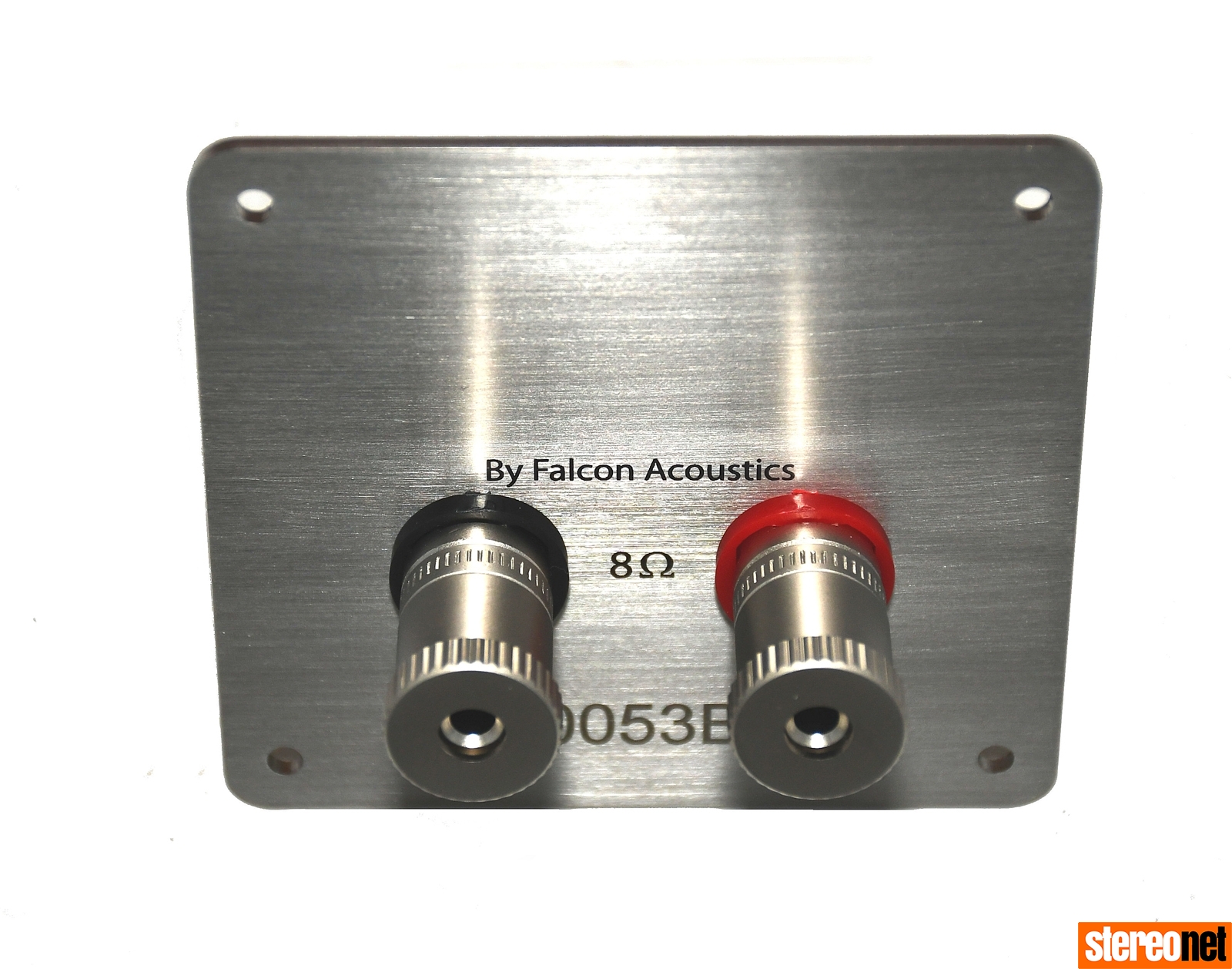
An eighth-wave line – as used in the IMF100 – is still pretty good at taming resonances, but is slightly less effective than a quarter-wave line in other respects. However, a quarter-wave line is just too big for a standmount design such as this, and the deficiencies of an eighth-wave speaker can be minimised with careful design, such as not over-tapering the line.
There are other factors that have to be taken into consideration when calculating the length of the transmission line. Firstly, the introduction of loose fibre wadding as a damping material reduces the effective velocity of sound due to the isothermal effect, causing a heat exchange between the air and the wool. This effectively reduces the speed of sound by a factor of about 0.85. The other issue to consider is end correction. This is caused by the vortex effect at the exit port, where the air emerging from the port takes a while to realise that it is no longer in a line and is now in the room! This means that the line as seen by the driver is about 12cm longer than it actually is. This figure needs to be deducted from the overall calculation to work out the length of the line.
Therefore, for an eighth-wave line, the length of the line inside the cabinet is one-eighth of the wavelength of the natural resonant frequency of the bass driver, minus the end correction and using the reduced value for the speed of sound in the calculation. The line is folded into a tapered labyrinth to enable it to fit neatly into the cabinet, which is the approach used in the IMF100.
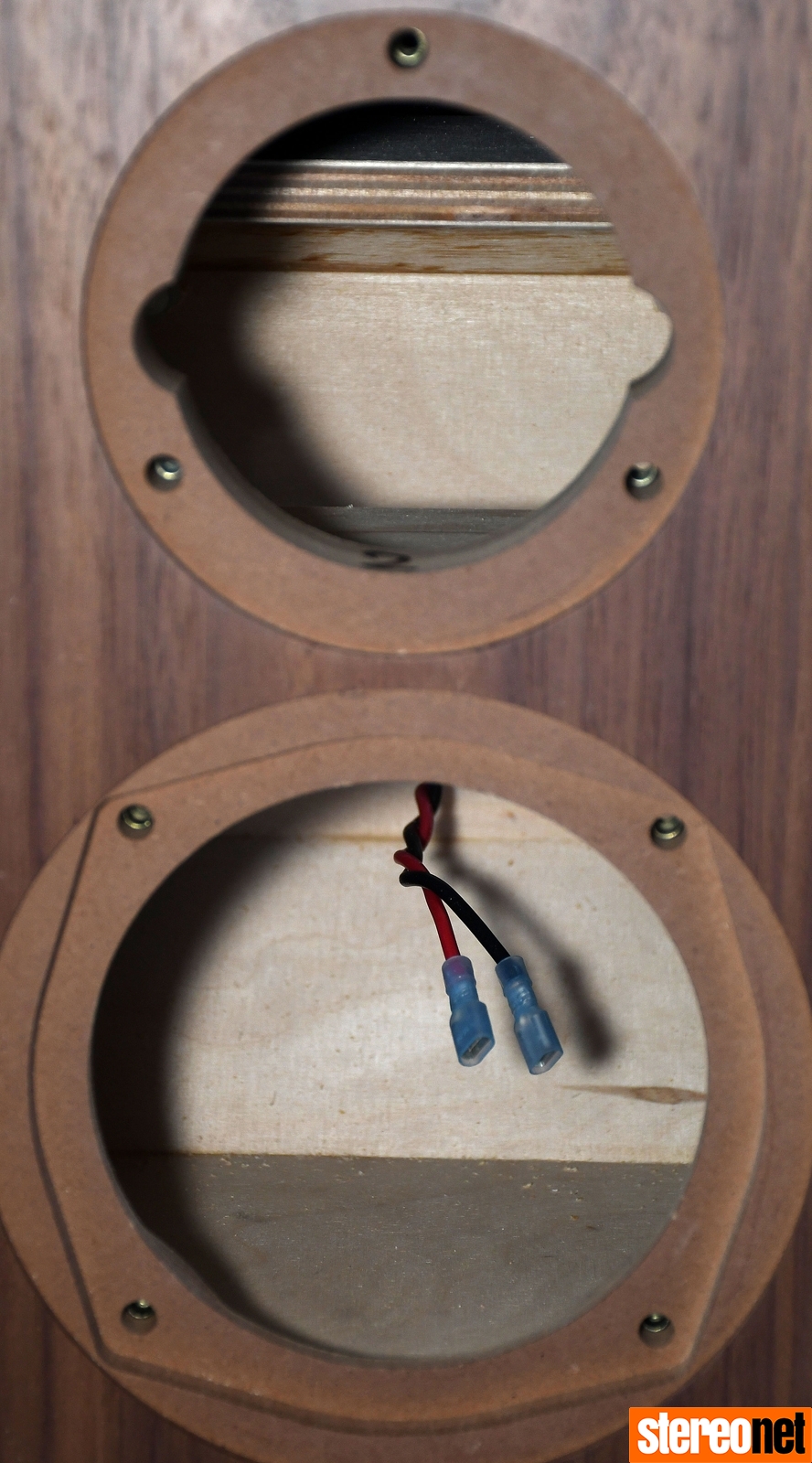
UNBOXED
The Falcon Acoustics kit comes supplied as a complete set of parts, including a ready-made cabinet and speaker grills (secured magnetically, which is a nice touch for a kit), drive units, gaskets, rear panel speaker connectors, crossovers and hardware. Even some Allen keys are included for fitting the bolts that secure the drive units.
Given Falcon's reputation, I was expecting a high-quality set of parts and was not disappointed. In fact, the kit exceeded my expectations, with the cabinets proving to be of superlative quality considering the price. The walnut veneer is really first rate, and the fitting around the curved front panel is immaculate. The crossover is well-made using good quality components.
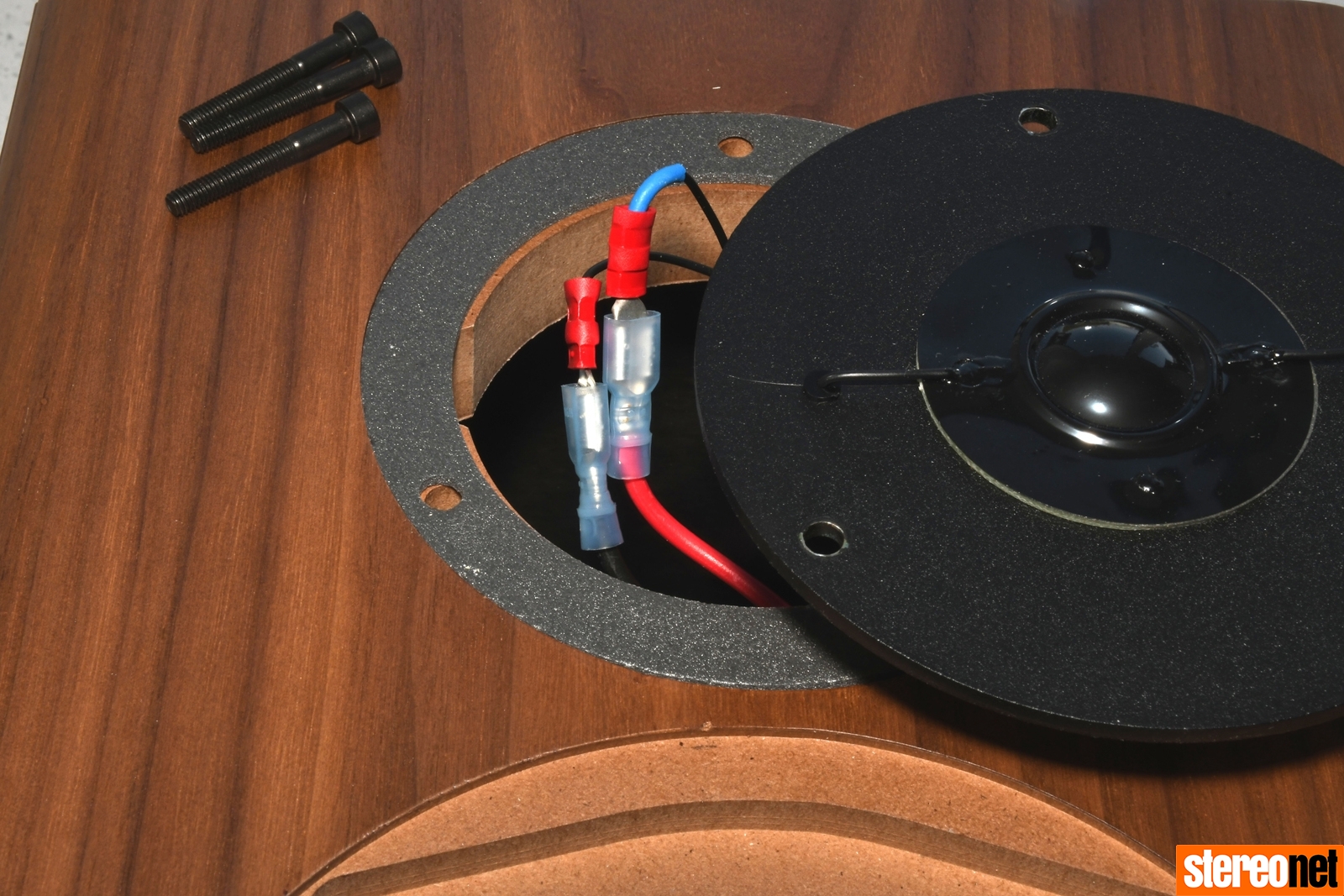
The IMF100 uses Falcon's modern versions of the famous T27 tweeter and B110 bass/midrange drive units – the same drive units found in the famous BBC LS3/5a loudspeaker, of course. The original KEF B110 mid/bass unit had a free-air resonance of around 35Hz, so assuming the Falcon version is similar, using a figure of 33m/s for the speed of sound in free air and applying the appropriate correction factors mentioned above, the line length for an eighth-wave design needs to be roughly 88cm long. Of course, this has to be accommodated in a cabinet of domestically acceptable dimensions, so Falcon achieves this by folding the line in the cabinet. The result is a loudspeaker that's neat and compact 230x460x280mm (WxHxD).
The kit is clearly designed for anyone to be able to build, as all the components either clip or screw together – and no soldering is required at all. The instructions are clear and extremely easy to follow. Each stage is described with a photograph and a caption. It took less than one hour for me to build both speakers, and I had no issues whatsoever with the construction. The end result is a pair of beautifully finished loudspeakers that certainly don't look homemade, despite being screwed together by yours truly!
SOUND QUALITY
Fully built up and run in, the IMF100's performance is not something that you'd associate with its modest retail price. Indeed, it's fair to say that my breath was rather taken away – both at the overall package and also at how good these classic drive units could sound in a modern context. Driven by my 300B parallel single-ended valve monoblock power amps, I was struck by this speaker's strong but tuneful bass, realistic tone, innate detail, expansive soundstaging and overall ease.
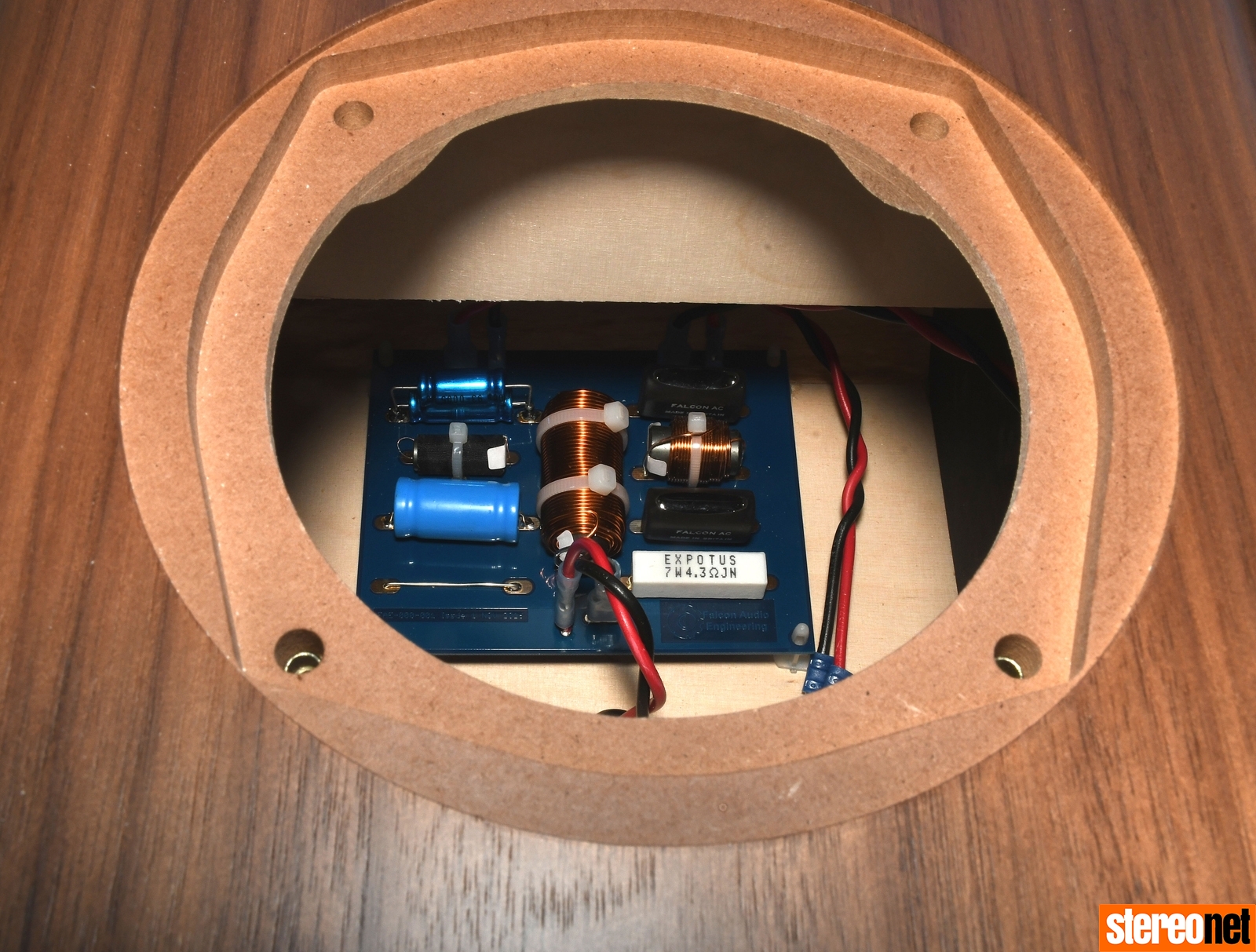
Take Prokofiev's Piano Concerto No. 1 played by Vladimir Ashkenazy and the LSO for example – the piano is always a challenging instrument to reproduce well. Yet, via the IMF it sounded completely believable, with the energy of the playing beautifully conveyed. There was excellent image placement and clarity, not only of the piano but also the entire orchestra. The piano was perfectly positioned in front, with the orchestra spread evenly across the soundstage. Trumpet blasts were bright, as indeed they should be, yet without any hint of harshness. Crescendos were full and open, and the low-end response was remarkably well-extended for a bookshelf speaker.
Then there's the solid and assured bass. Stravinsky's The Firebird Suite played by the Atlanta Symphony Orchestra is a recording that features a very pronounced and extended drum roll during the opening sequence. Paradoxically, it's most noticeable when it pauses for a few bars before starting again. The IMF100 did a superb job of conveying the power and fullness of this, sounding gutsy, tight and punchy – and with no sense of being muffled. Equipe 68 by Azymuth is a banging techno track, and I found myself propelled through it by the sheer force of the performance.
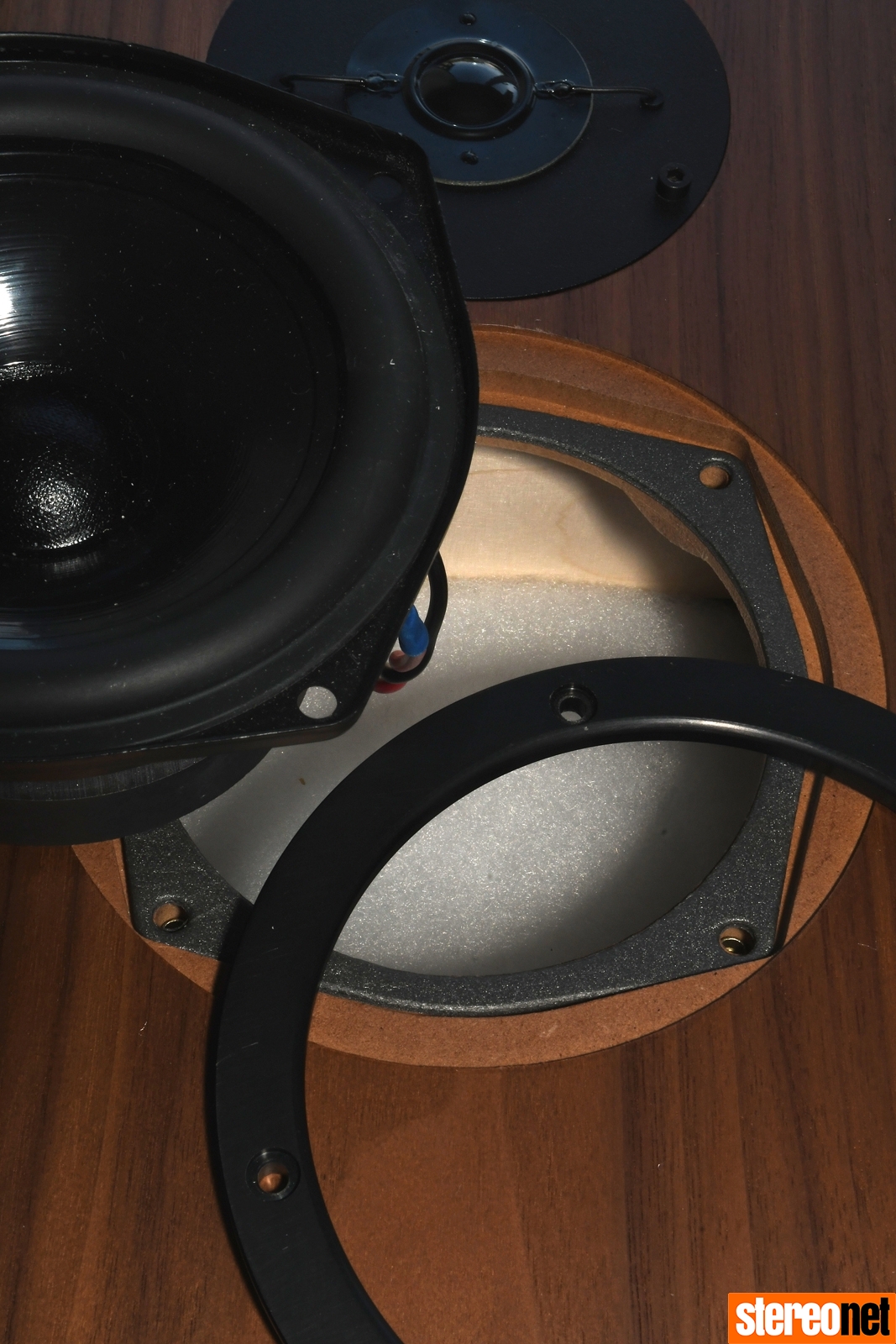
This speaker also displayed lovely vocal timbre. The recent recording of Eleanor McEvoy singing The Meeting of the Waters from her Forgotten Dreams album (on the excellent Chasing The Dragon audiophile record label) sounded incredibly lifelike. I can say this with confidence because I was at the actual recording session! The tinkling introduction on the grand piano played by both Eleanor and her accompanist Damon Butcher was sweet and a perfect complement to the former's slightly husky vocals. She then turns her hand to the violin on the track Carolan's Concerto and the duo's arrangement of this traditional jig was crisp and natural sounding.
Unlike some less successful transmission line designs, I found the IMF100 could carry the music's natural rhythms in a most satisfying way. For example, Astor Piazzolla's Verano Porteño performed by Salvatore Accardo was recorded using my favourite Neumann valve microphones, the U47, U49 and M49. The performance of this late sixties' nuevo tango' music, for which Piazzolla is famed, incorporates elements from jazz and classical styles and is both powerful and moving. Accardo's reading came over as quite an aggressive performance, and the emotionally-charged playing was splendidly reproduced by this little loudspeaker. The attack of the violin proved captivating, yet in no way edgy – so I was quickly drawn into the performance.
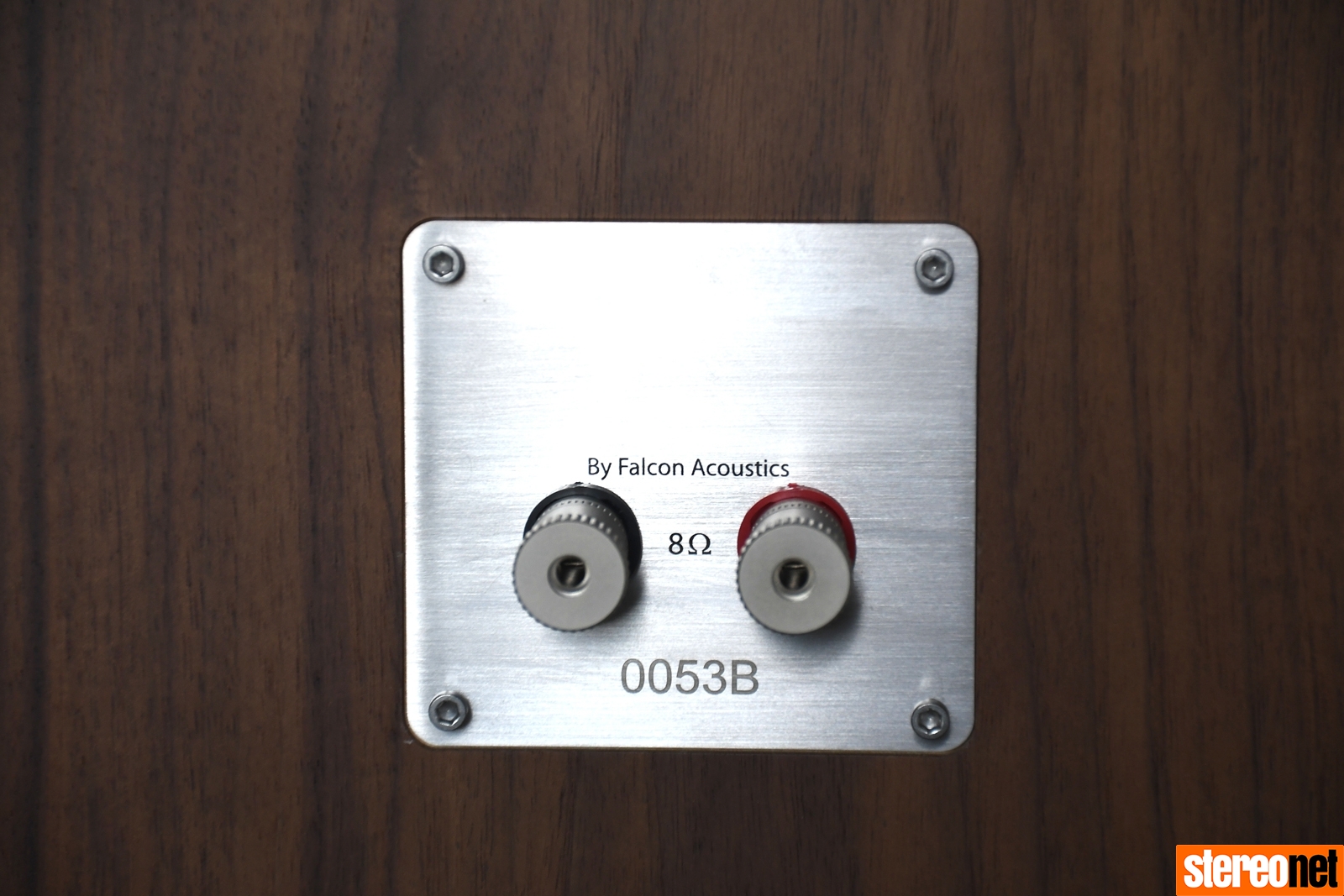
This held for whatever type of music I chose to play. John Williams' reading of Giuliani's Concerto for Guitar and String Orchestra with the English Chamber Orchestra sounded effortlessly musical. The detailed and sophisticated rendering of the guitar was both tonally mature and temporally realistic, and I found it particularly well located in space too. For example, the orchestra's physical location on this recording appeared quite far behind the guitar – showing off the IMF100's fine depth perspective.
Jazz was wonderfully snappy too. Steve Race's Late Race was recorded in 1965 yet still sounds as fresh and clear as any modern recording when properly handled – and this loudspeaker duly obliged. Indeed it managed to max out on the clarity and detail, yet string things together in such a cohesive way that it could have been recorded yesterday. The guitar work on Round Midnight balanced well with the saxophone and the harpsichord, making for a rhythmically coherent sound. Factor in the bass and drums, which were in perfect proportion, and the recording was a joy to hear.
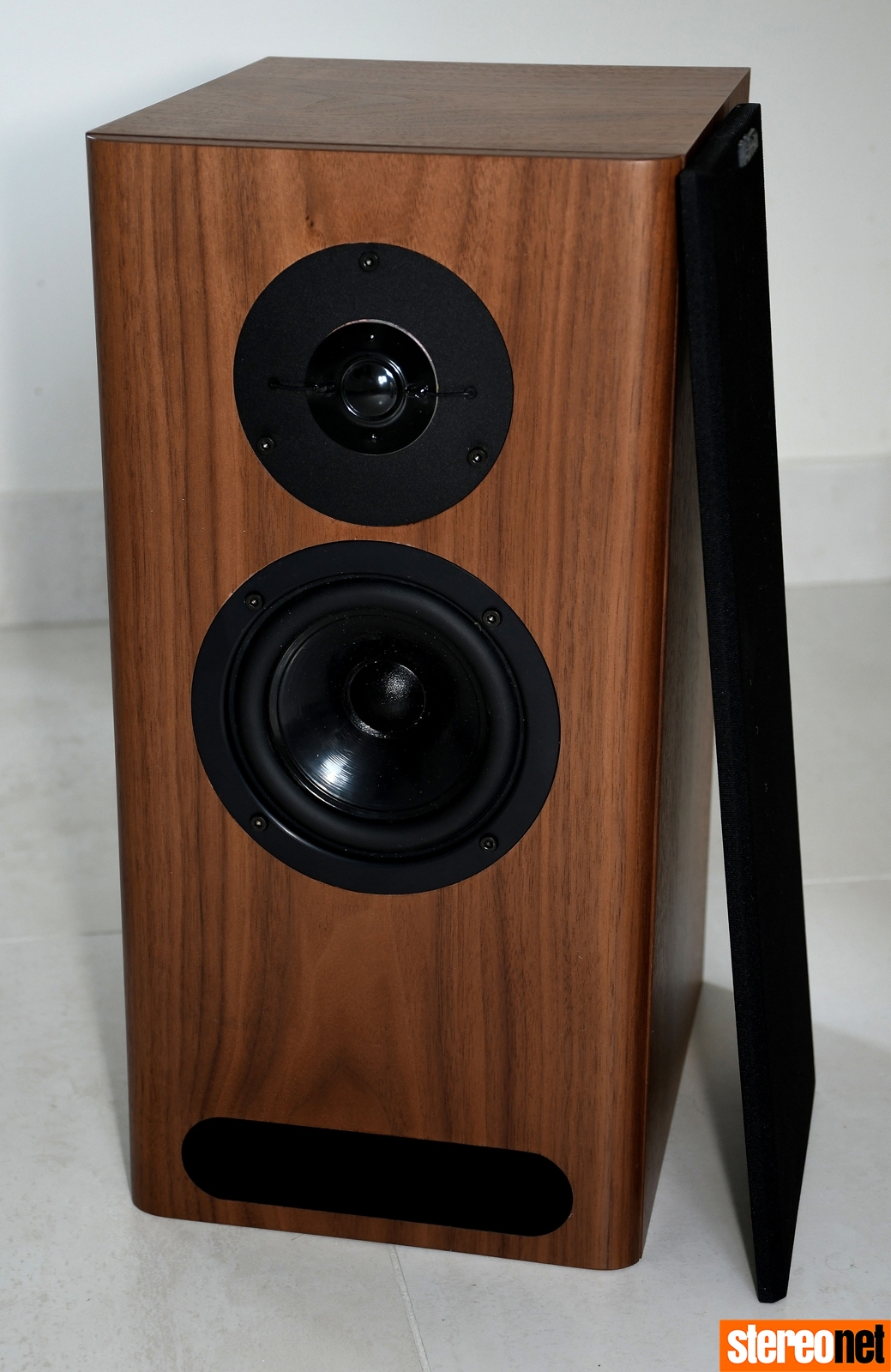
THE VERDICT
 Falcon Acoustics' IMF100 is genuinely hard to fault at its price. The simple expedient of bolting it together yourself takes a lot of cost out of the final retail price of the kit, meaning your money goes on the quality of the material (drivers, cabinets, crossovers, etc.) rather than the manufacture. The result is something that looks professional and sounds like a commercially available speaker of at least twice the price.
Falcon Acoustics' IMF100 is genuinely hard to fault at its price. The simple expedient of bolting it together yourself takes a lot of cost out of the final retail price of the kit, meaning your money goes on the quality of the material (drivers, cabinets, crossovers, etc.) rather than the manufacture. The result is something that looks professional and sounds like a commercially available speaker of at least twice the price.
Indeed it really excels in some respects. Especially for its size, bass is seriously special – being consistently tight, punchy and clear. Its midband is refined, and the top end is classically smooth yet still pretty open. So for the money, there's an awful lot to like about the IMF100 kit – providing you're willing and able to do it yourself.
Falcon Acoustics are selling the IMF 100 kit directly to Australian customers for £1,245.83 (approx AUD $2,257 plus associated import costs). Contact Falcon Acoustics directly for a shipping quotation,.
For more information, visit Falcon Acoustics.
Neville Roberts
A Chartered Scientist, Chartered Engineer, Chartered Physicist and a Fellow of the British Institution of Engineering and Technology, Neville has worked as a Director of the British National Health Service, for the Ministry of Defence and in private industry. He’s a lifelong audio enthusiast and regular contributor to British hi-fi magazines, with a passion for valves and vinyl.
Posted in:Hi-Fi Loudspeakers Bookshelf / Standmount Applause Awards 2020
Tags: falcon acoustics
JOIN IN THE DISCUSSION
Want to share your opinion or get advice from other enthusiasts? Then head into the Message Forums where thousands of other enthusiasts are communicating on a daily basis.
CLICK HERE FOR FREE MEMBERSHIP
Trending
applause awards
Each time StereoNET reviews a product, it is considered for an Applause Award. Winning one marks it out as a design of great quality and distinction – a special product in its class, on the grounds of either performance, value for money, or usually both.
Applause Awards are personally issued by StereoNET’s global Editor-in-Chief, David Price – who has over three decades of experience reviewing hi-fi products at the highest level – after consulting with our senior editorial team. They are not automatically given with all reviews, nor can manufacturers purchase them.
The StereoNET editorial team includes some of the world’s most experienced and respected hi-fi journalists with a vast wealth of knowledge. Some have edited popular English language hi-fi magazines, and others have been senior contributors to famous audio journals stretching back to the late 1970s. And we also employ professional IT and home theatre specialists who work at the cutting edge of today’s technology.
We believe that no other online hi-fi and home cinema resource offers such expert knowledge, so when StereoNET gives an Applause Award, it is a trustworthy hallmark of quality. Receiving such an award is the prerequisite to becoming eligible for our annual Product of the Year awards, awarded only to the finest designs in their respective categories. Buyers of hi-fi, home cinema, and headphones can be sure that a StereoNET Applause Award winner is worthy of your most serious attention.



